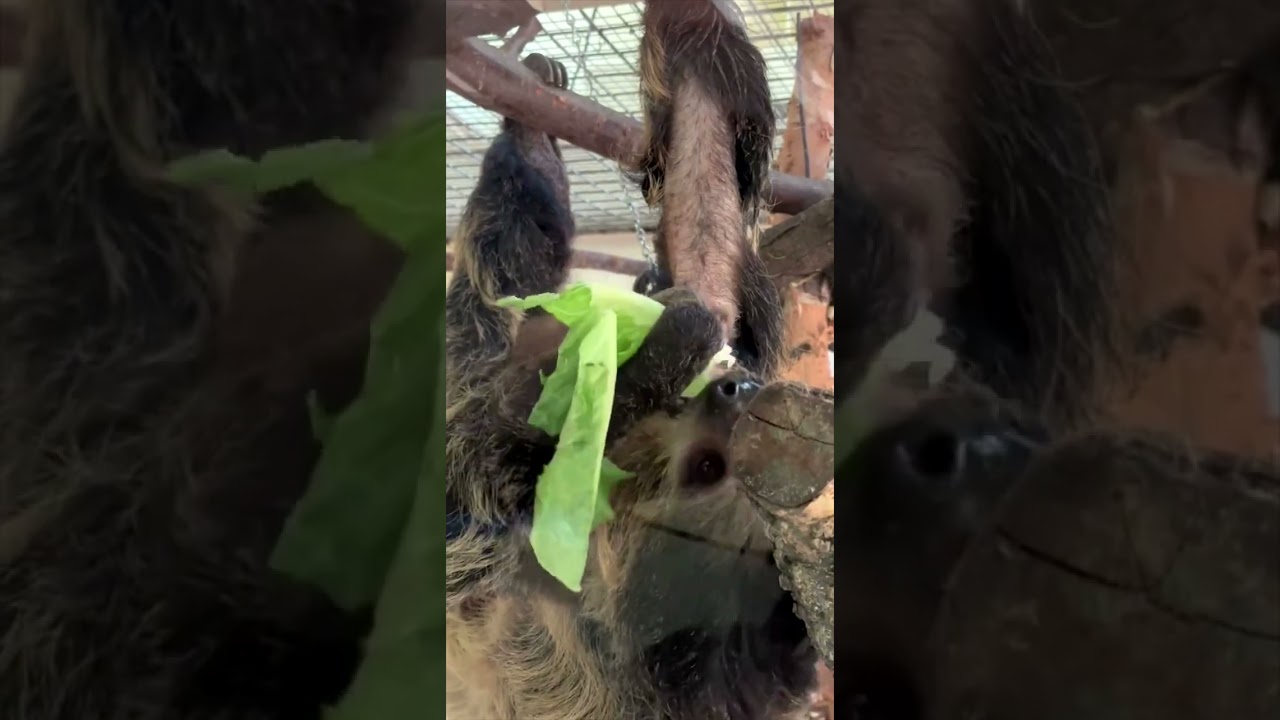Summary:
1. Baby Sloth Juno: Introducing the adorable star of the Cincinnati Zoo #shorts
2. Lettuce Lover: Discover Juno’s unique fondness for lettuce and its significance in sloth diet
3. The Cincinnati Zoo: Learn about the esteemed institution and its conservation efforts
4. Great American Insurance Group: Exploring the importance of corporate partnerships in wildlife conservation
5. Get Involved: Find out how you can support the Cincinnati Zoo’s important work through donations and engagement
Suppose you’ve ever fallen down a rabbit hole of cute animal videos on social media. In that case, there’s a high chance you’ve stumbled upon the heartwarming clip of Baby Sloth Juno gleefully munching on lettuce at the Cincinnati Zoo. In this article, we will unravel the unique and fascinating aspects of Juno’s story, shedding light on the extraordinary nature of these adorable creatures and the remarkable efforts undertaken by the Cincinnati Zoo in their conservation.
1. Baby Sloth Juno: Introducing the Adorable Star of the Cincinnati Zoo #shorts
It’s hard not to be captivated by the ethereal charm of Baby Sloth Juno, a resident of the Cincinnati Zoo. In a short video that has taken the internet by storm, this little creature showcases its endearing personality as it indulges in its favorite green treat, lettuce. But what makes Juno so special?
Sloths, known for their slow-moving nature, have become a symbol of tranquility and a reminder to slow down in our fast-paced world. Juno epitomizes this remarkable characteristic, captivating audiences all over the globe with her relaxed demeanor and adorable antics.
2. Lettuce Lover: Discover Juno’s Unique Fondness for Lettuce and Its Significance in Sloth Diet
While human taste preferences vary widely, it’s intriguing to learn about the specific dietary choices of animals. One interesting trait of Juno is her love for lettuce. But why is this particular vegetable so important in the sloth diet?
In the wild, sloths mainly consume leaves, shoots, and fruits. However, their adaptations to a slow metabolism make their digestion challenging. Hence, low-nutrient diets, such as leaves, require significant energy conservation. Being a leafy green, lettuce is a suitable substitute for sloths in captivity, providing them with the necessary nutrients while accounting for their unique digestive system.
3. The Cincinnati Zoo: Learn About the Esteemed Institution and Its Conservation Efforts
Now that we’ve delved into the charismatic world of Juno, let’s take a closer look at the Cincinnati Zoo, the esteemed institution that provides a home for her and numerous other remarkable creatures.
Founded in 1875, the Cincinnati Zoo is one of the oldest zoos in the United States, renowned for its commitment to animal welfare, education, and conservation. With a mission to create adventure, conserve nature, inspire people, and serve globally, the Cincinnati Zoo promotes wildlife conservation and brings people closer to the natural world.
4. Great American Insurance Group: Exploring the Importance of Corporate Partnerships in Wildlife Conservation
Behind every successful conservation organization, there are often steadfast corporate partners who understand the significance of preserving our planet’s biodiversity. One such partner of the Cincinnati Zoo is the Great American Insurance Group.
Corporate partnerships like these are instrumental in supporting the critical work of zoos and other conservation initiatives. Their financial support allows for the improvement of animal habitats, the facilitation of breeding programs, and the development of educational resources. These collaborations showcase how the corporate world can contribute to the betterment of our environment and its precious inhabitants.
5. Get Involved: Find out How You Can Support the Cincinnati Zoo’s Important Work
After witnessing the cute and captivating escapades of Baby Sloth Juno, you may be wondering how you can contribute to the Cincinnati Zoo’s vital conservation efforts. Fortunately, there are various ways for you to get involved and make a positive impact:
– Donate: The Cincinnati Zoo relies on public support to continue its conservation work. Donating to the zoo is crucial in protecting endangered species, promoting environmental awareness, and providing enriching experiences for visitors of all ages.
– Volunteer: If you’re passionate about wildlife and have the time to spare, consider volunteering at the Cincinnati Zoo. Volunteers are essential in assisting with animal care, educational programs, conservation events, and more.
– Spread the Word: Use the power of social media to share the incredible stories and videos from the Cincinnati Zoo. Raising awareness about the zoo’s conservation efforts can inspire others to take action and support wildlife protection.
In conclusion, Baby Sloth Juno’s love for lettuce is just one example of the captivating wonders waiting to be discovered at the Cincinnati Zoo. From its rich history to its dedication to wildlife conservation, this esteemed institution continues to serve as a beacon of hope for the natural world. So, let’s come together, support their important work, and ensure a brighter future for all creatures, big and small.
*****
Source Description
This great video is brought to you by Great American Insurance Group. #shorts
http://support.cincinnatizoo.org/donate
Subscribe: https://www.youtube.com/user/CincinnatiZooTube/featured
Facebook: https://www.facebook.com/cincinnatizoo/
Twitter: https://twitter.com/CincinnatiZoo
Instagram: https://www.instagram.com/cincinnatizoo/
Find out more at http://www.cincinnatizoo.org

